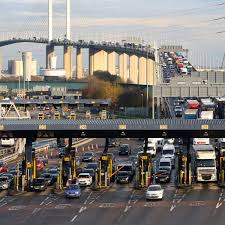Understanding the Dartford Crossing and Its Importance

Introduction
The Dartford Crossing is a crucial transportation route in the United Kingdom, linking Kent and Essex. It comprises the Dartford Tunnel and the Dartford Bridge, serving as a vital artery for both local and long-distance traffic. Given its significance for commuters and freight transport, any developments affecting this crossing can have widespread implications for travel times and regional economies.
Current Status and Developments
As of September 2023, the Dartford Crossing has been experiencing increased traffic congestion owing to ongoing roadworks aimed at improving the structure and flow of vehicles. The planned upgrades include enhancements to the tunnel systems and improved electronic toll collection, which are expected to reduce delays and enhance safety for motorists. Current estimates suggest that roadworks could lead to average journey times increasing by 15-20 minutes during peak hours.
The Highways England team has stressed the importance of these upgrades, citing that the Dartford Crossing handles over 160,000 vehicles daily. With the rise in traffic since the pandemic, it is essential to modernise the infrastructure to meet increasing demand.
Impact on Commuters
The upgrade works have caused frustration among regular users, particularly during rush hours. Commuters relying on the crossing to get to work in London or nearby regions have raised concerns about the unpredictability of travel times. Local residents have also highlighted the environmental impact due to idling traffic, which increases air pollution around the area. As a result, there have been calls for better communication from transport authorities to keep users informed about expected delays and alternative routes.
Conclusion
Overall, the Dartford Crossing remains a key feature in the UK’s transport network, and while improvements are necessary for future efficiency, the current roadworks reflect the challenges in balancing infrastructure upgrades and daily commuter needs. The completion of these enhancements is projected for early 2024, promising smoother travel experiences for millions of drivers whilst aiming to reduce emissions and congestion levels. As these developments unfold, monitoring the impact on traffic patterns will be crucial for both local authorities and road users alike.









